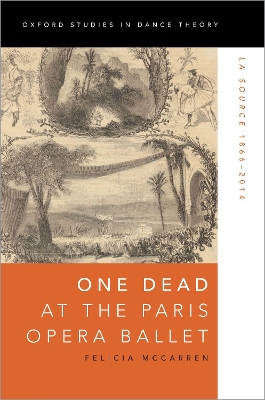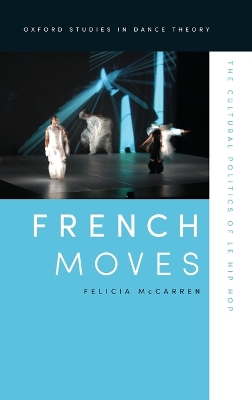Oxford Studies in Dance Theory
2 total works
In 1866, when the ballet La Source debuted, the public at the Paris Opera may have been content to dream about its setting in the verdant Caucasus, its exotic Circassians, veiled Georgians, and powerful Khan. Yet the ballet's botany also played to a public thinking about ethnic and exotic others at the same time-and in the same ways-as they were thinking about plants. Along with these stereotypes, with a flower promising hybridity in a green ecology, and the death of the embodied Source recuperated as a force for regeneration, the ballet can be read as a fable of science and the performance as its demonstration. Programmed for the opening gala of the new Opera, the Palais Garnier, in 1875 the ballet reflected not so much a timeless Orient as timely colonial policy and engineering in North Africa, the management of water and women.
One Dead at the Paris Opera Ballet takes readers to four historic performances, over 150 years, showing how-- through the sacrifice of a feminized Nature-- La Source represented the biopolitics of sex and race, and the cosmopolitics of human and natural resources. Its 2011 reinvention at the Paris Opera, following the adoption of new legislation banning the veil in public spaces, might have staged gender and climate justice in sync with the Arab Spring, but opted instead for luxury and dream. Its 2014 reprise might have focused on decolonizing the stage or raising eco-consciousness, but exemplified the greater urgency attached to Islamist threat rather than imminent climate catastrophe, missing the ballet's historic potential to make its audience think.
One Dead at the Paris Opera Ballet takes readers to four historic performances, over 150 years, showing how-- through the sacrifice of a feminized Nature-- La Source represented the biopolitics of sex and race, and the cosmopolitics of human and natural resources. Its 2011 reinvention at the Paris Opera, following the adoption of new legislation banning the veil in public spaces, might have staged gender and climate justice in sync with the Arab Spring, but opted instead for luxury and dream. Its 2014 reprise might have focused on decolonizing the stage or raising eco-consciousness, but exemplified the greater urgency attached to Islamist threat rather than imminent climate catastrophe, missing the ballet's historic potential to make its audience think.
For more than two decades, le hip hop has shown France's "other" face: danced by minorities associated with immigration and the suburbs, it has channeled rage against racism and unequal opportunity and offered a movement vocabulary for the expression of the multicultural difference that challenges the universalist discourse of the Republic.
French hip-hoppers subscribe to black U.S. culture to articulate their own difference but their mouv' developed differently, championed by a Socialist cultural policy as part of the patrimoine culturel, instituted as a pedagogy and supported as an art of the banlieue. In the multicultural mix of "Arabic" North African, African and Asian forms circulating with classical and contemporary dance performance in France, if hip hop is positioned as a civic discourse, and
hip hop dancer as legitimate employment, it is because beyond this political recuperation, it is a figural language in which dancers express themselves differently, figure themselves as something or someone else.
French hip hop develops into concert dance not through the familiar model of a culture industry, but within a Republic of Culture; it nuances an "Anglo-Saxon" model of identity politics with a "francophone" post-colonial identity poetics and grants its dancers the statut civil of artists, technicians who develop and transmit body-based knowledge.
This book- the first in English to introduce readers to the French mouv' -analyzes the choreographic development of hip hop into la danse urbaine, touring on national and international stages, as hip hoppeurs move beyond the banlieue, figuring new forms within the mobility brought by new media and global migration.
French hip-hoppers subscribe to black U.S. culture to articulate their own difference but their mouv' developed differently, championed by a Socialist cultural policy as part of the patrimoine culturel, instituted as a pedagogy and supported as an art of the banlieue. In the multicultural mix of "Arabic" North African, African and Asian forms circulating with classical and contemporary dance performance in France, if hip hop is positioned as a civic discourse, and
hip hop dancer as legitimate employment, it is because beyond this political recuperation, it is a figural language in which dancers express themselves differently, figure themselves as something or someone else.
French hip hop develops into concert dance not through the familiar model of a culture industry, but within a Republic of Culture; it nuances an "Anglo-Saxon" model of identity politics with a "francophone" post-colonial identity poetics and grants its dancers the statut civil of artists, technicians who develop and transmit body-based knowledge.
This book- the first in English to introduce readers to the French mouv' -analyzes the choreographic development of hip hop into la danse urbaine, touring on national and international stages, as hip hoppeurs move beyond the banlieue, figuring new forms within the mobility brought by new media and global migration.

